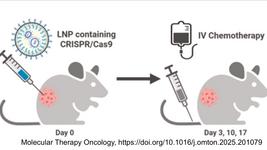CRISPR–Csm enables single-molecule RNA imaging in cells
smLiveFISH is a robust tool for visualising single RNA molecules in living cells using a type III-A CRISPR–Csm system from Streptococcus thermophilus, combined with multiplexed guide RNAs. The system achieves high specificity by tiling multiple guide RNAs along the target RNA, enhancing the signal-to-noise ratio.
The authors demonstrate its utility by tracking two endogenous transcripts, NOTCH2 and MAP1B, in various cell types. NOTCH2 mRNAs exhibit cotranslational translocation at the endoplasmic reticulum, while MAP1B mRNAs undergo directional transport towards the cell periphery, independent of translation. Additionally, smLiveFISH detects transcript localisation changes in response to small molecules, such as P-body sequestration following translation inhibition.
Compared to existing methods, smLiveFISH offers improved sensitivity and resolution without the need for RNA tagging or modifications. The findings highlight its potential for studying RNA dynamics and localisation in both normal and disease contexts.
Jennifer Doudna led the study at the University of California, Berkeley. It was published today in Nature Biotechnology.
To get more CRISPR Medicine News delivered to your inbox, sign up to the free weekly CMN Newsletter here.
Tags
CLINICAL TRIALS
Sponsors:
Base Therapeutics (Shanghai) Co., Ltd.
Sponsors:
Base Therapeutics (Shanghai) Co., Ltd.







